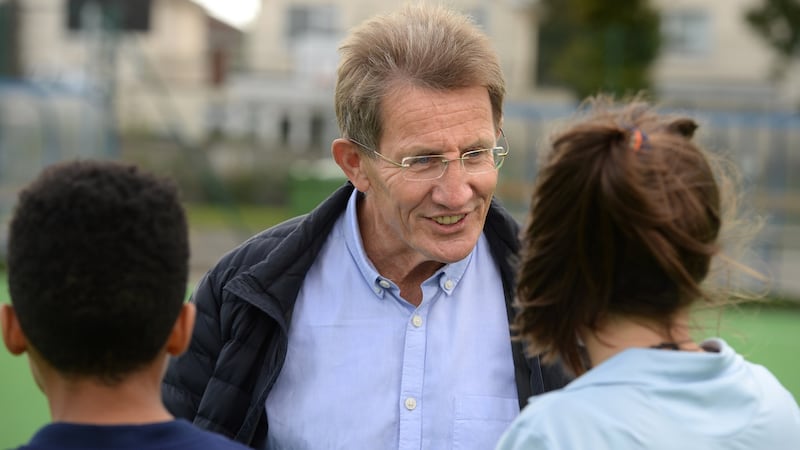As the starting gun for the Tokyo Olympics is readied, elite athletes are pushing their already superb physiques to the limits, training long hours for marginal gains.
While elite athletes struggle, the rest of us have it far easier. The most inactive among us pocket gains quickest, even from brief physical activity. "Don't underestimate the benefits from doing a single bout of exercise," says Prof Niall Moyna, exercise scientist at Dublin City University.
Moyna started out in his career researching how exercise impacts the immune system. An early discovery he made was that six minutes of moderate cycling dramatically ramped up immune cells in the blood. It also boosted the activity of natural killer cells, destroyers of cancer cells. “Even short bouts of activity can decrease blood pressure, improve insulin activity, prime your immune system,” says Moyna. “Don’t get caught up with how long and how hard you exercise. The main thing is to just get into the habit of being more active.”

Any extra physical activity doesn’t need to be exercise even, he suggests. Standing up and going for a walk ramps up oxygen consumption three- to sixfold. A single bout of exercise, if you have high blood pressure, can bring it down to the normal range for up to 20 hours afterwards. It also steps up your immune system more than any pill.
Stress signals
When Dr Christopher Perry at York University in Canada begins teaching fourth-year medical students, he lists symptoms: increased core temperature; elevated heart rate, drop in blood pH, pain, sweating and elevated breathing. Many students guess various diseases, but the answer is vigorous exercise. "How can something so bad for you be so good for you?" Perry asks. The answer, he says, is that the stress signals from exercise turn on genes in almost every organ in the body, triggering a rebuild-and-repair operation.
A brisk walk, gardening, a run, any bout of strenuous physical exertion, inflicts miniscule tears to muscle and causes inflammation. The body is well prepared. Soon after, repair mechanisms switch on and inflammation everywhere is eventually suppressed. This can take hours to several days.
The body responds quickly to more physical activity. “It is amazing how quickly the body adapts,” Moyna says. “And the people who get the biggest changes the quickest are the people who are most inactive.” The heart and lungs change noticeably after about three to six weeks of stepping up activity, meaning more oxygen gets delivered to your muscles. An even quicker upgrade happens inside our muscle cells to strange but ancient companions.
In the late 1990s, Star Wars films shifted away from a magical Force to explain Jedi prowess, to tiny organisms living inside of cells – the midichlorians. Not coincidentally, scientists were probing their real-life counterparts, our mitochondria. There is "an otherness about mitochondria," says Prof Mike Murphy, programme leader at the MRC Mitochondrial Biology Unit in Cambridge, UK. Like the fictional counterparts, mitochondria were once independent organisms (bacteria), but gave up this life to reside inside our single-cell ancestors more than two billion years ago.
Once we start moving around, our muscles breakdown glucose stores to power our muscles, but this is a short-term strategy, which generates lactic acid that causes fatigue. After a while, mitochondria must take up more slack – turning fats and carbs with oxygen to the energy that powers muscles. This is more efficient and is why elite marathon runners are chock full of super-efficient mitochondria.
Free radicals
Within days of starting physical exertions, muscle cells in non-athletes start to make more mitochondria and recycling old ones. They also start fine-tuning them. Which is healthier for us. “Couch-potato mitochondria produce far more free radicals [which can damage cells] than those being exercised,” Murphy notes.
But our ancient friends do much more. Scientists have discovered that mitochondria are also crucial in signalling the health status of cells. “Mitochondria are internal sensors for damage to the cells,” he adds. “Because of their funny history, when they are damaged, parts of them look foreign to the cell and they trigger an immune response.” They get degraded by poor diet and lack of exercise. “How you live affects your mitochondria,” he points out. Dysfunctional mitochondria are now of interest as part of or a contributor to diseases such as diabetes, heart disease and even brain disorders such as Alzheimer’s.
We can admire the staying power of elites during endurance events in the Olympics, with their extreme capabilities, but we don’t need to be athletes to score health goals. Even walking is a winner. “We spend about 85 per cent of our healthcare budget treating chronic diseases. We could reduce that by around 60 per cent if every adult walked 30 minutes a day,” Moyna points out. “That’s the impact of walking.”
Defusing stroke
An Irish scientist hopes to introduce a new stroke treatment for patients. After a stroke or heart attack, a lack of blood flow deprives tissues of oxygen. Rapid medical interventions can dissolve the blockage and allow blood flow back in. Unfortunately, this crucial life-saving step itself causes damages to the cells because of how mitochondria react. These are the power factories of our cells, using oxygen to turn carbs and fats into energy for movement.
Once oxygen flows back to cells affected by a stroke or heart attack, the stalled mitochondria sputter back into action. A stockpile of metabolites ignites and releases a burst of damaging free radicals, which can kill the cell and set off further inflammation.
Prof Mike Murphy in Cambridge has developed a drug that can allow the metabolites to safely wash out of cells after a stroke or heart attack, thereby avoiding damage that usually occurs when blood flow restarts. He hopes to test this drug in stroke patients in Germany, at the same time they receive stents to open the flow of blood into their oxygen-starved brains.







